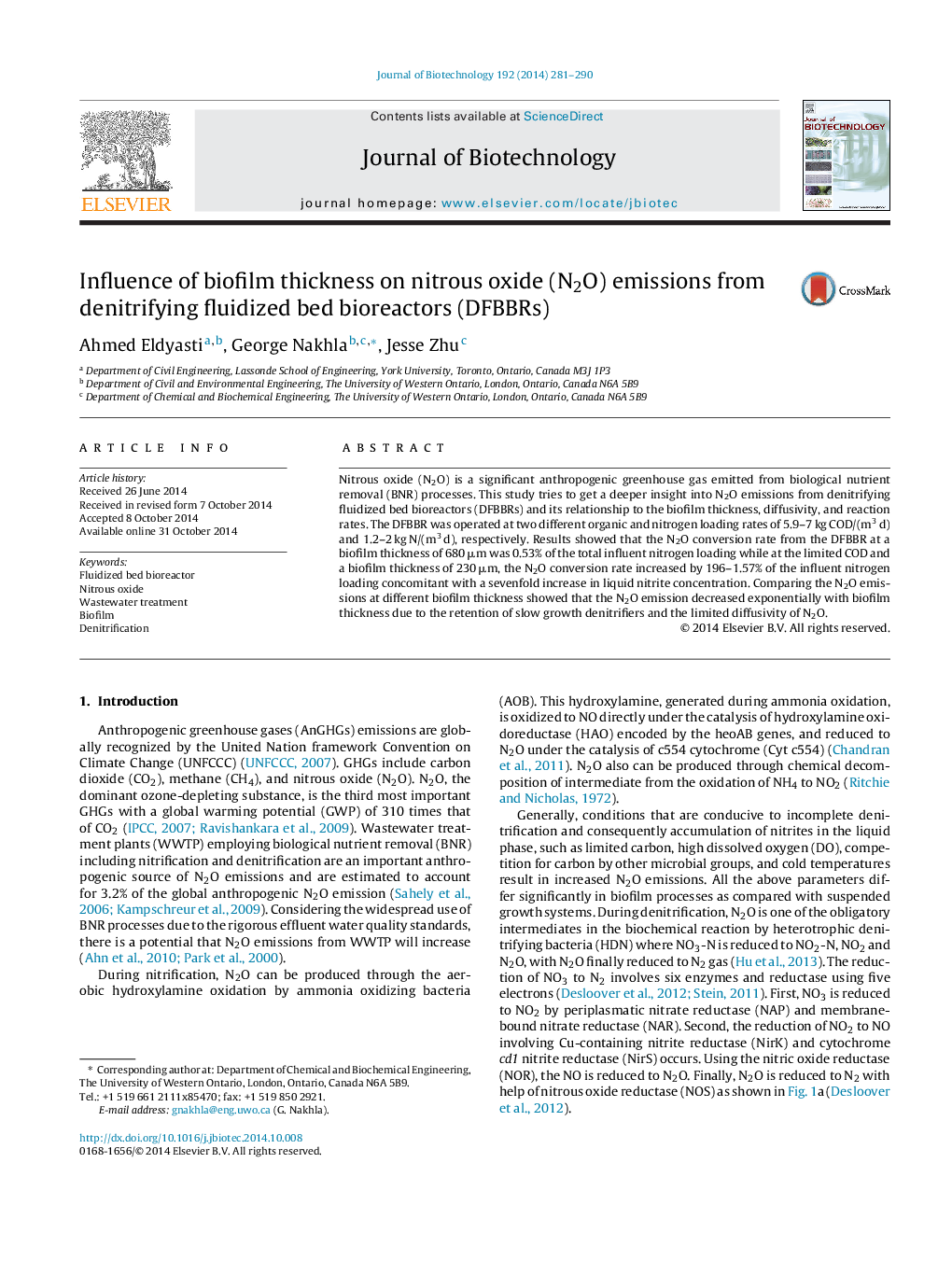| Article ID | Journal | Published Year | Pages | File Type |
|---|---|---|---|---|
| 6491349 | Journal of Biotechnology | 2014 | 10 Pages |
Abstract
Nitrous oxide (N2O) is a significant anthropogenic greenhouse gas emitted from biological nutrient removal (BNR) processes. This study tries to get a deeper insight into N2O emissions from denitrifying fluidized bed bioreactors (DFBBRs) and its relationship to the biofilm thickness, diffusivity, and reaction rates. The DFBBR was operated at two different organic and nitrogen loading rates of 5.9-7 kg COD/(m3 d) and 1.2-2 kg N/(m3 d), respectively. Results showed that the N2O conversion rate from the DFBBR at a biofilm thickness of 680 μm was 0.53% of the total influent nitrogen loading while at the limited COD and a biofilm thickness of 230 μm, the N2O conversion rate increased by 196-1.57% of the influent nitrogen loading concomitant with a sevenfold increase in liquid nitrite concentration. Comparing the N2O emissions at different biofilm thickness showed that the N2O emission decreased exponentially with biofilm thickness due to the retention of slow growth denitrifiers and the limited diffusivity of N2O.
Related Topics
Physical Sciences and Engineering
Chemical Engineering
Bioengineering
Authors
Ahmed Eldyasti, George Nakhla, Jesse Zhu,
